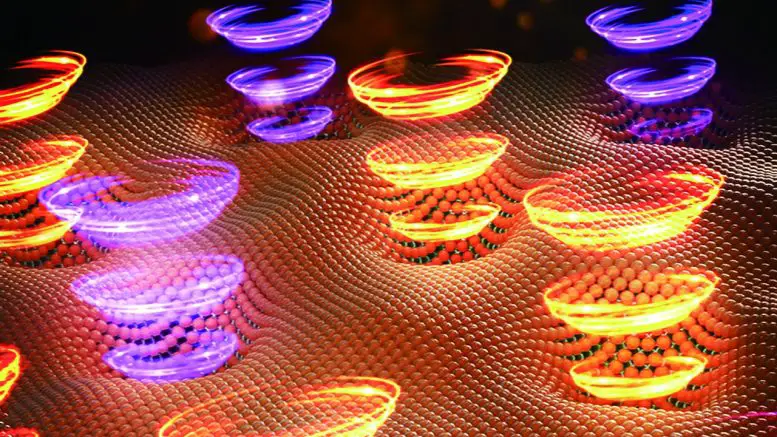Single photon sources are needed for quantum communication, cryptography and other purposes. This is not a problem, but the solution requires large equipment, including the strongest magnets. US scientists managed to simplify the task and even managed to create a “two-in-one” device – it simultaneously emits single photons and gives them circular polarization. Simply add a modulator to transmit encoded data and get a fully protected connection.
Traditionally, polarized single photon sources have been produced in a strong magnetic field. This is good for labs but not good for compact applications. A group of scientists led by Los Alamos National Laboratory researchers has created a device that doesn’t need powerful magnets. For this, scientists connected two atomically thin semiconductors and made a notch on the top one.
The top material is represented by a tungsten diselenide layer (WSe). 2 ) and a lower, slightly thicker, magnetic nickel-phosphorus trisulfide compound (NiPS) 3 ). Wells of about 400 nm in diameter and about one nanometer deep were created using atomic force microscopy. About 200 such indentations can easily fit a section of hair. Holes in the material create depressions in the material plane, both in physical and potential energy. Under the action of the laser, these drops cause electrons to flow through the tungsten diselenide, and their interaction produces single photons.
But underneath each hole lies a single layer of magnetic material that determines the polarization vector for the photons flying out of the hole. All photons produced by each well are circularly polarized free of charge. And the presence of polarization is the key to data transmission. You just need to learn how to modulate this feature, which is usually relatively easy to solve. If waveguides are connected to such a generator, streams of single-polarized and modulated photons can be directed anywhere, at least into a microcircuit for calculations, at least an optical communication channel for transmission to the other side of the Earth.
“Our work shows that a single-layer semiconductor can emit circularly polarized light without the aid of an external magnetic field, – tell the authors of the work. — Previously, this effect was only achieved with the help of strong magnetic fields created by large superconducting magnets, by combining quantum emitters with very complex nanoscale photonic structures, or by injecting spin-polarized carriers into quantum emitters. The advantage of our approach based on the short-range interaction effect is the low cost of production and reliability.”
“By having a source that can generate a single stream of photons and simultaneously generate polarization, we have essentially combined two devices into one.” – add scientists. Source
Source: Port Altele
